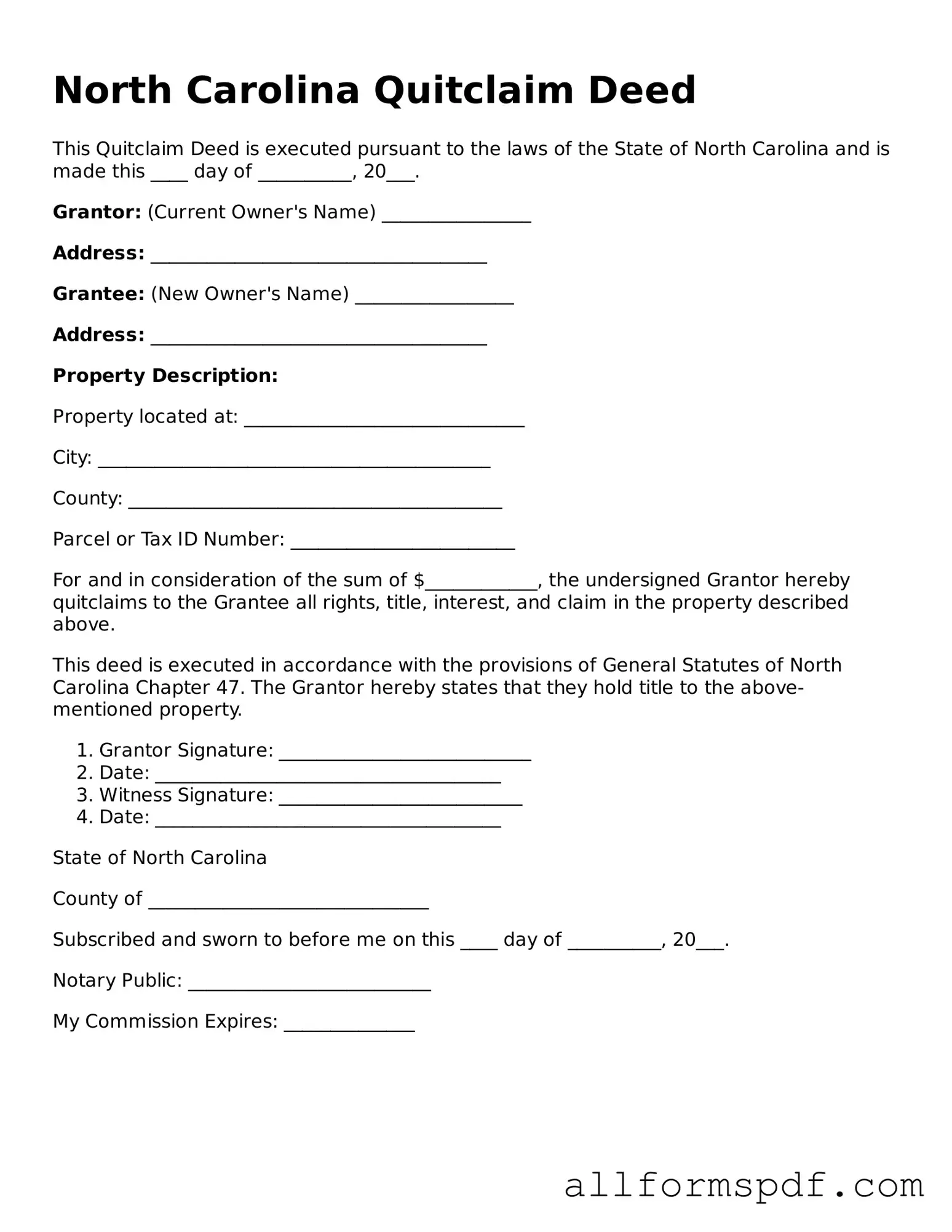Fillable Quitclaim Deed Form for North Carolina
A Quitclaim Deed is a legal document used in North Carolina to transfer ownership of property from one party to another without any warranties or guarantees. This form is often utilized in situations such as transferring property between family members or clearing up title issues. Understanding how to properly complete and file a Quitclaim Deed can simplify the process of property transfer and help avoid potential disputes.
Create My Quitclaim Deed Now
